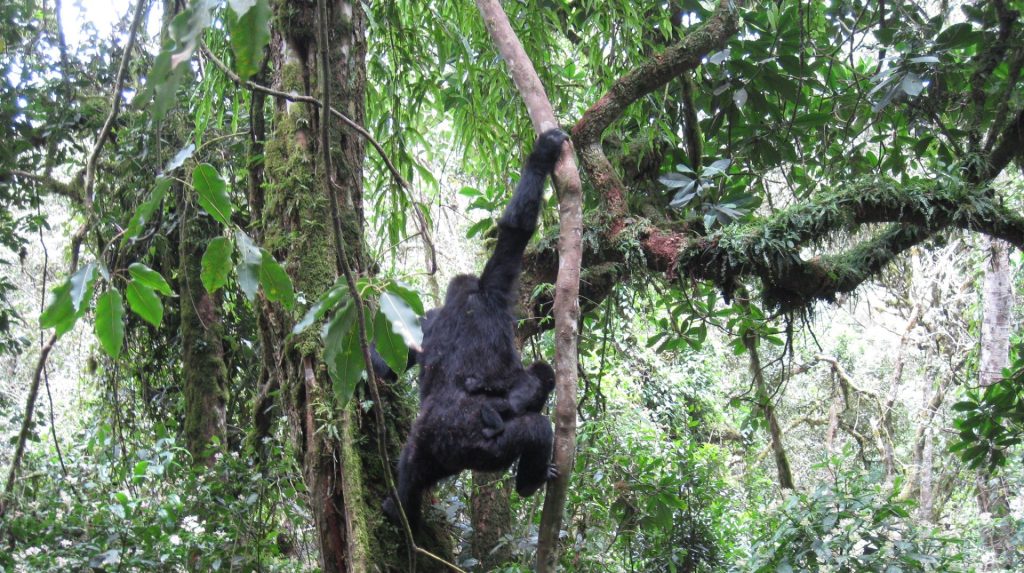
Kahuzi-Biega National Park was established in 1937 by the Belgium colonial rulers and then expanded in 1975. It now covers 6000 square km or 2300 square miles. Roughly 13000 Batwa were cleared out of the area to make way for the park (along with other people who had settled more recently).
At the current time, there are an estimated 60,000 people living within the national park, with almost 6000 permanent houses. How many more people will return with this decision? This is unclear. However, what is essential, is that the people who return, go back to lives that live with the forest, and not ones that would destroy it in a short period of time.
The people have the right to live there, if they wish to live as they have for centuries, but they do not have the right to turn the whole forest over to farms and villages. With care, this can be good for both wildlife and people – there is likely to be many jobs for locals from the national park.
Among a long list of primates, Graur (eastern lowland) gorillas live in the reserve, with a population of around 250 – around 3-4% of the remaining population of this species) there are a number of habituated groups, so trips to see the gorillas can occur here; Chimpanzee are shy in the reserve, and having not been habituated, can rarely be seen close (though there is a sanctuary within the national park); elephant are not doing well, and while there were 350 in 1996, it is not clear if there are any left at all. There are quite a number more primates, as well as a whole host of other species found within this reserve.
I hope that there are scientists monitoring the situation, to make sure that humans and animals can thrive in such close proximity.











